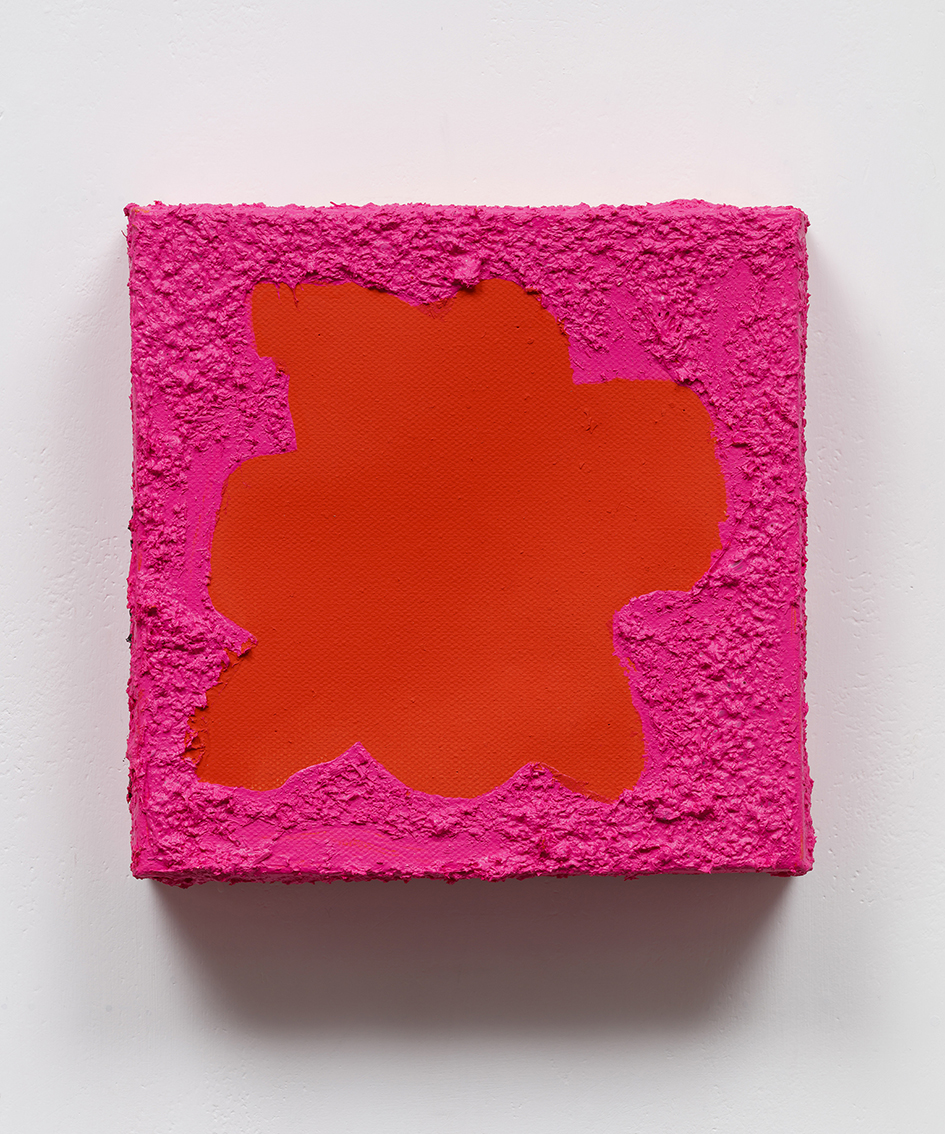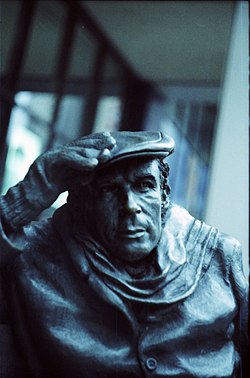|
●★ J.S. Bach : Partitta No.5 in G Major BWV 829 ★●
Praeambulum Allemande Courante Sarabande Tempo di Minuet Passepied G i g u e
((Performed by Glenn Gould Live 1957))
■ Canadian Pianist Glenn Gould(1932-1982) ■
Eccentricities Glenn Gould usually hummed while he played, and his recording engineers had mixed results in how successfully they were able to exclude his voice from recordings. Gould claimed that his singing was subconscious and increased proportionately with the inability of the piano in question to realize the music as he intended. It is likely that this habit originated in Gould's having been taught by his mother to "sing everything that he played", as Kevin Bazzana puts it. This became "an unbreakable (and notorious) habit".[45] Some of Gould's recordings were severely criticised because of the background "vocalise". For example, a reviewer of his 1981 re-recording of the Goldberg Variations opined that many listeners would "find the groans and croons intolerable".[46] A similar habit is often exhibited by jazz pianists Keith Jarrett, Erroll Garner and even, in a somewhat less obtrusive way, Oscar Peterson. Gould was renowned for his peculiar body movements while playing (circular swaying; conducting; or grasping at the air as if to reach for notes, as he did in the taping of Beethoven's Tempest Sonata) and for his insistence on absolute control over every aspect of his playing environment. The temperature of the recording studio had to be exactly regulated. He invariably insisted that it be extremely warm. According to Friedrich, the air conditioning engineer had to work just as hard as the recording engineers.[47] The piano had to be set at a certain height and would be raised on wooden blocks if necessary.[48] A small rug would sometimes be required for his feet underneath the piano.[49] He had to sit fourteen inches above the floor and would only play concerts while sitting on the old chair his father had made. He continued to use this chair even when the seat was completely worn through.[50] His chair is so closely identified with him that it is shown in a place of honor in a glass case at the National Library of Canada. Conductors responded diversely to Gould and his playing habits. George Szell, who led Gould in 1957 with the Cleveland Orchestra, remarked to his assistant, "That nut's a genius."[51] Leonard Bernstein said, "There is nobody quite like him, and I just love playing with him."[51] Ironically, Bernstein created a stir in April 1962 when, just before the New York Philharmonic was to perform the Brahms D minor piano concerto with Gould as soloist, he informed the audience that he was assuming no responsibility for what they were about to hear. Specifically, he was referring to Gould's insistence that the entire first movement be played at half the indicated tempo. Plans for a studio recording of the performance came to nothing; the live radio broadcast (along with Bernstein's disclaimer) was subsequently released on CD. Gould was averse to cold, and wore heavy clothing (including gloves), even in warm places. He was once arrested, presumably mistaken for a vagrant, while sitting on a park bench in Sarasota, Florida, dressed in his standard all-climate attire of coat(s), warm hat, and mittens.[52] He also disliked social functions. He hated being touched, and in later life he limited personal contact, relying on the telephone and letters for communication. Upon one visit to historic Steinway Hall in New York City in 1959, the chief piano technician at the time, William Hupfer, greeted Gould by giving him a slap on the back. Gould was shocked by this, and complained of aching, lack of coordination, and fatigue due to the incident; he even went on to explore the possibility of litigation against Steinway & Sons if his apparent injuries were permanent.[53] He was known for cancelling performances at the last minute, which is why Bernstein's above-mentioned public disclaimer opens with, "Don't be frightened, Mr. Gould is here; will appear in a moment." In his liner notes and broadcasts, Gould created more than two dozen alter egos for satirical, humorous, or didactic purposes, permitting him to write hostile reviews or incomprehensible commentaries on his own performances. Probably the best-known are the German musicologist "Karlheinz Klopweisser", the English conductor "Sir Nigel Twitt-Thornwaite", and the American critic "Theodore Slutz".[54] Fran's Restaurant was a constant haunt of Gould's. A CBC profile noted, "sometime between two and three every morning, Gould would go to Fran's, a 24-hour diner a block away from his Toronto apartment, sit in the same booth, and order the same meal of scrambled eggs."[55] Philosophical and aesthetic viewsGould stated that had he not been a musician, he would have been a writer. He wrote music criticism and expounded his philosophy of music and art. In these he rejected what he deemed banal in music composition and its consumption by the public, and also gave insightful analyses of the music of Richard Strauss, Alban Berg and Anton Webern. Despite certain modernist sympathies, Gould's attitude to popular music was ambivalent or negative. He enjoyed a jazz concert with his friends as a youth, mentioned jazz in his writings, and once criticized The Beatles for "bad voice leading".[56] He did, however, share a mutual admiration with jazz pianist Bill Evans, who made his seminal record "Conversations with Myself" using Gould's celebrated Steinway CD 318 piano. He believed that the keyboard is fulfilled as an instrument primarily through counterpoint, a musical style that reached its zenith during the Baroque era. Much of the homophony that followed, he felt, belongs to a less serious and less spiritual period of art. Gould was convinced that the institution of the public concert with audience en masse and the tradition of applause was not only an anachronism, but also a "force of evil," and that these practices should be abandoned. This doctrine he set forth, half in jest and half seriously, in "GPAADAK", the Gould Plan for the Abolition of Applause and Demonstrations of All Kinds.[57] Gould enjoyed solitude, and expressed that theme in his trio of radio documentaries, the Solitude Trilogy. Having entertained a lifelong fascination with the hereafter, with theories of reincarnation and mystic numerology akin to those of Arnold Schoenberg, Gould believed that he would be reincarnated two years after his death in the person of Sam Caldwell, a media theorist and contrapuntal poet. This belief was strengthened by Gould's regrets (expressed particularly in his 1980 interviews with Bruno Monsaigneon) that he had not brought his contrapuntal radio work to a satisfactory stage of completion. With plans to explore to its logical conclusion the application of Wagnerian leitmotifs and J.S. Bach's contrapuntal textures in the medium of the spoken word, and particularly in poetry, Gould conceived of this fictional "second go-around" toward the end of his already immensely productive lifetime. HealthEarly in his life, Gould suffered a spine injury, which prompted his physicians to prescribe an assortment of painkillers and other drugs for him. Some speculate that his continued use of prescription medications throughout his career had a deleterious effect on his health. He was highly concerned about his health throughout his life, worrying about everything from high blood pressure to the safety of his hands. It is often claimed that Gould never shook hands with anyone and always wore gloves;[58] however, there are documented cases of Gould shaking hands.[59] Gould's experience with psychoanalytic treatment and medication is well documented. After Gould's death, Dr. Timothy Maloney, director of the Music Division of the National Library of Canada, wrote about the possibility that Gould also had Asperger syndrome,[60] commonly referred to as a high-functioning type of autism first described in a medical paper in 1981. This idea was first tentatively proposed by Gould's biographer, Dr. Peter Ostwald, who argued that Gould's eccentricities—such as rocking and humming, isolation, difficulty with social interaction, dislike of being touched, and uncanny focus and technical ability—can be related to the symptoms displayed by persons with AS, according to Maloney. Ostwald died before he could further develop his theory; however, other experts dismiss this theory as postmortem diagnosis based on circumstantial evidence.[61] Dr. Helen Mesaros, a Toronto psychiatrist and author, published a rebuttal to Maloney's paper, suggesting that there are ample psychological and emotional explanations for Gould's eccentricities and that it is not necessary to resort to neurological explanations. Recent information and research on ASD (Autism Spectrum Disorder) would accurately support Dr. Peter Ostwald's conclusion, as all the symptoms he mentions plus others, such as sensitivity to temperature, fixation on routines and specific objects (i.e. the totem-like chair) and social difficulties are now recognized as being associated with the diagnosis. RelationshipsGould lived a private life: Bruno Monsaingeon said of him, "No supreme pianist has ever given of his heart and mind so overwhelmingly while showing himself so sparingly." [62] In 2007, Cornelia Foss, wife of composer and conductor Lukas Foss, publicly claimed in an article in the Toronto Star (August 25, 2007) that she and Gould had had a love affair lasting several years. She and her husband had met Gould in Los Angeles in 1956. Cornelia was an art instructor who had studied sculpture at the American Academy in Rome; Lukas was a pianist and composer who conducted both the Buffalo Philharmonic Orchestra and the Brooklyn Philharmonic. After several years, Glenn and Cornelia became lovers. [63] Cornelia left Lukas in 1967 for Gould, taking her two children with her to Toronto, where she purchased a house near Gould's apartment, at 110 St. Clair Avenue West. According to Cornelia, "There were a lot of misconceptions about Glenn, and it was partly because he was so very private. But I assure you, he was an extremely heterosexual man. Our relationship was, among other things, quite sexual." Their affair lasted until 1972, when she returned to Lukas. As early as two weeks after leaving her husband, she had noticed disturbing signs in Gould. She describes a serious paranoid episode:
Awards and recognitionsGlenn Gould received many honors before and after his death, although he personally claimed to despise competition in music. In 1983, he was inducted into the Canadian Music Hall of Fame.
Gould won four Grammy Awards:
Notes
| ||
|
| ||
'Lecture Concert' 카테고리의 다른 글
| Farewell~* (0) | 2015.12.02 |
|---|---|
| 스페인 국민주의 - Falla, Granados, Albeniz, Mompou (0) | 2015.09.17 |
| 베토벤 소나타 29 <함머크라비어> (0) | 2015.07.14 |
| 아믈랭 - 리스트 (0) | 2015.07.14 |
| 해피 뉴이어~* (0) | 2015.07.14 |


